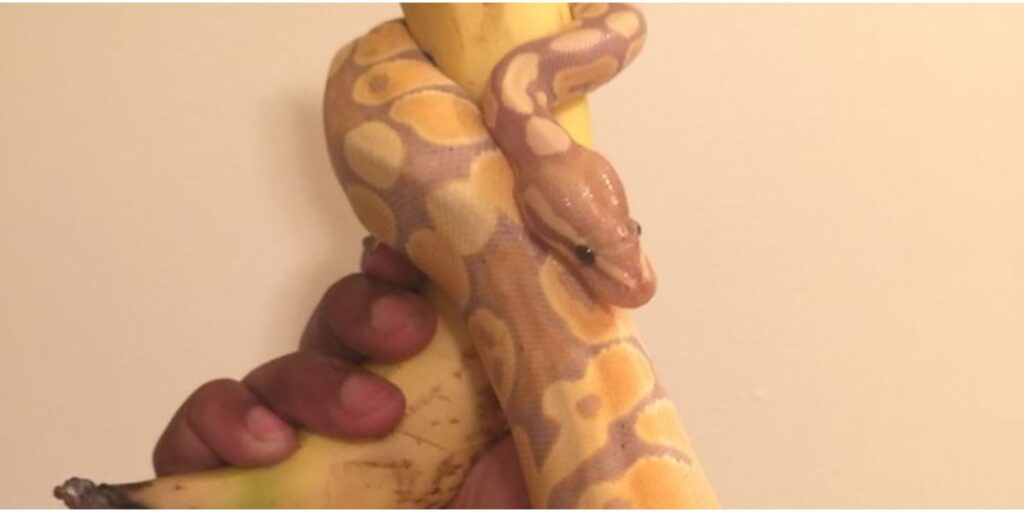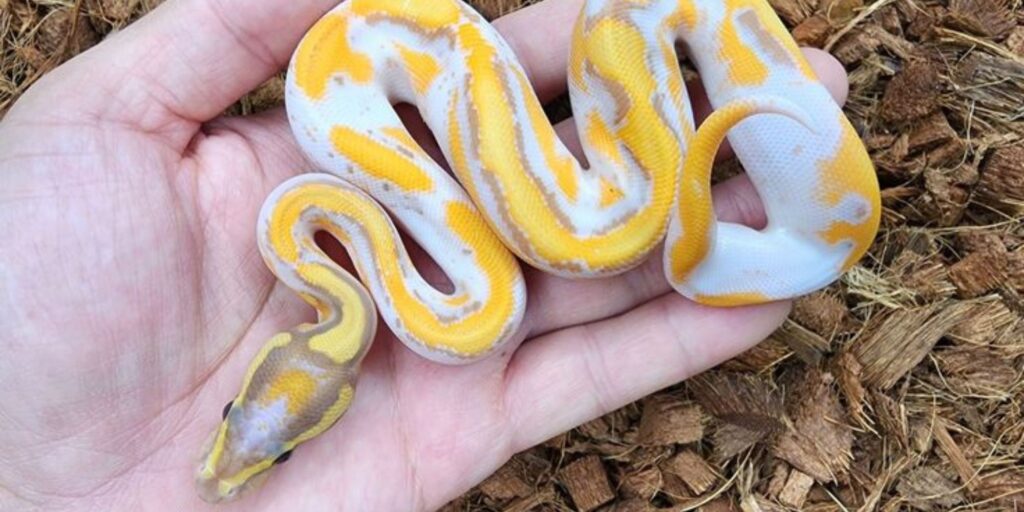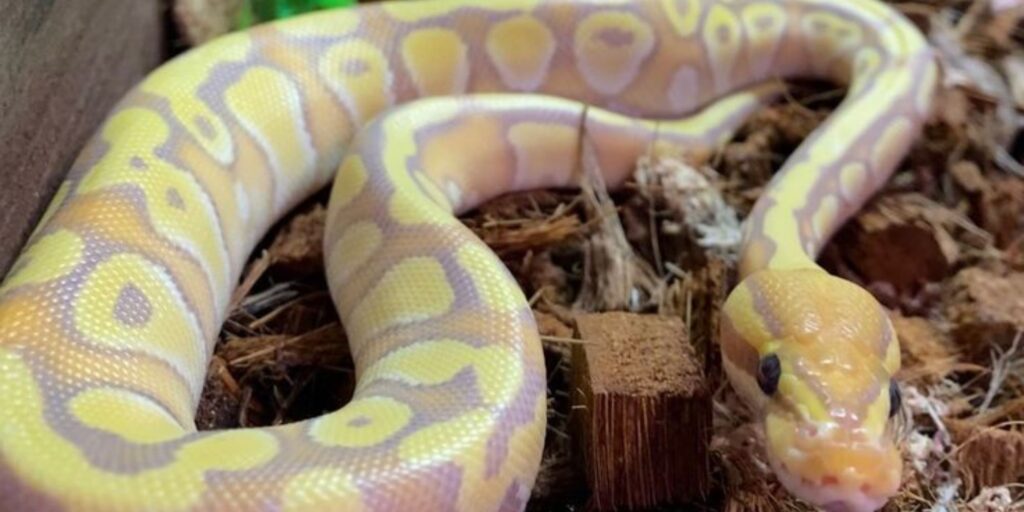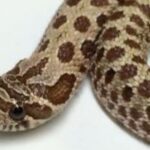Overview
The Banana Ball Python stands out with its vibrant and striking appearance. Its bright yellow and golden hues contrast with bold, darker spots and patterns along its body. The rich yellow tones and deep browns or blacks create a stunning look, making the Banana Ball Python a favorite among reptile enthusiasts. Known for its gentle and docile temperament, this snake curls up into a tight ball when it feels threatened, which is how it got its name. Growing between 3 to 5 feet in length, the Banana Ball Python makes an ideal pet for snake lovers who seek a calm and beautiful companion.
Introduction to Banana Snake

Welcome to the vibrant world of banana ball python snakes! These captivating creatures have become increasingly popular in the pet trade, mesmerizing reptile enthusiasts with their stunning colors and gentle demeanor. If you’re new to the realm of reptiles or simply curious about these striking snakes, you’re in for a treat.
Banana ball pythons are not just eye candy; they hold fascinating traits that make them an appealing choice for beginners. From their unique appearance to their intriguing behavior, there’s so much more than meets the eye with these serpents. Whether you’re considering adopting one into your home or merely wish to learn more about this extraordinary species, this guide will provide you with everything you need to know about banana ball pythons—making your journey into herpetology both enjoyable and educational!
Banana Snake :Scientific Classification and Description
The Banana Ball Python, scientifically known as *Python regius*, belongs to the family Pythonidae. This species is a favorite among reptile enthusiasts due to its striking coloration and unique patterns. The banana morph specifically showcases vibrant yellow hues interspersed with dark brown or black markings, creating an eye-catching appearance.
Ball pythons are native to West and Central Africa, where they inhabit grasslands, forests, and shrublands. They thrive in warm environments but require adequate hiding spots for security. Their natural behavior includes coiling tightly into a ball when threatened—a defense mechanism that gives them their name.
Adult Banana Ball Pythons typically reach lengths of 3 to 5 feet, though some individuals can grow larger. They have stout bodies with smooth scales that feel cool to the touch. With their distinct head shape and relatively small size compared to other python species, they make fascinating pets for both novice and experienced keepers alike.
In terms of reproduction, these snakes are oviparous; females lay clutches of around six to twelve eggs after mating. The hatchlings emerge with a miniature version of the adult’s stunning color pattern—an enchanting sight for any snake lover.
Habitat and Locations of Banana Snake
Banana Ball Pythons are native to the grasslands and forests of West Africa. They thrive in environments that provide both warmth and moisture, allowing them to regulate their body temperature effectively. These snakes prefer areas with ample hiding spots, such as dense foliage or burrows.
In the wild, you can often find these pythons in regions like Nigeria, Ghana, and Cameroon. Their habitat typically includes savannas where they can bask in sunlight during the day while retreating to cover at night. This adaptability helps them evade predators while hunting for prey.
Captive breeding has made Banana Ball Pythons popular among reptile enthusiasts globally. In captivity, they require a carefully controlled environment that mimics their natural habitat’s humidity and temperature levels. Providing sufficient hideouts is essential for their well-being.
These beautiful snakes exhibit remarkable versatility when it comes to habitats—ranging from tropical rainforests to dry scrublands—showcasing their resilience as a species. Breeders have also developed numerous morphs over time, further expanding interest in this captivating snake among hobbyists everywhere.
Conservation Status and Population
The conservation status of the Banana Ball Python remains stable, largely due to its popularity in the pet trade. Breeders raise these snakes in captivity, reducing pressure on wild populations. However, habitat loss poses a concern as urban development and agriculture encroach on their natural environments.
In some areas, these pythons thrive in abundance. Their adaptability allows them to succeed in various habitats, including forests and grasslands. Still, localized threats can impact certain populations more severely than others.
Banana Ball Pythons have become one of the most sought-after morphs among reptile enthusiasts. This demand has encouraged responsible breeding practices, which help maintain healthy population levels without depleting wild stocks.
Although they are not currently listed as endangered or vulnerable, ongoing monitoring remains essential. As with many species, preserving their habitats plays a critical role in ensuring that Banana Ball Pythons continue to thrive in both captivity and the wild.
Physical Characteristics and Appearance of Banana Snake

Banana Ball Pythons are striking snakes known for their vibrant and eye-catching coloration. Their bodies typically exhibit a base color of yellow, which is beautifully contrasted by dark brown or black markings. This unique pattern makes them stand out among other morphs in the ball python family.
One notable feature of Banana Ball Pythons is the irregularity in their patterns. Each snake has its distinct design, making every individual truly one-of-a-kind. The genetic mutation responsible for this stunning appearance contributes to its popularity among reptile enthusiasts and breeders alike.
These snakes have a robust build with an average length ranging from 3 to 5 feet when fully grown. They possess a relatively large head compared to their body size, giving them a somewhat regal look. The smooth scales add to their aesthetic appeal while serving as protection.
In addition to visual beauty, these pythons display subtle iridescence under certain lighting conditions, further enhancing their allure. With such captivating physical characteristics, it’s no wonder that many people are drawn to the fascinating world of Banana Ball Python Snakes.
History and Evolution of Banana Snake
The Banana Ball Python snake, a captivating morph of the Common Ball Python, has an intriguing history that begins with its emergence in captivity. First discovered in the early 2000s, this unique variation quickly gained popularity among reptile enthusiasts due to its vibrant colors and distinct patterns. Its cheerful yellow and lavender hues make it a showstopper in the world of pet snakes.
Genetically speaking, Banana Ball Pythons are classified as a co-dominant trait. This means that when bred with other morphs or even standard Ball Pythons, they can produce fascinating combinations. The ability to create new color variations adds to their allure for breeders and hobbyists alike.
These snakes originated from Africa; however, their evolution into popular pets is primarily linked to selective breeding practices rather than any wild adaptation. Over time, breeders have focused on enhancing specific traits like coloration and patterning while maintaining overall health.
Their rise in popularity reflects broader trends within herpetoculture where enthusiasts seek out visually striking animals. As more people become fascinated by these exotic creatures, Banana Ball Pythons continue to evolve through human influence rather than natural selection alone.
Understanding Banana Ball Python Behavior
Banana Ball Pythons are known for their calm and docile nature. This makes them a popular choice among snake enthusiasts, especially beginners. They tend to be shy creatures, often preferring to stay hidden rather than explore boldly. Their introverted personality means they’re less likely to strike unless they feel threatened.
When it comes to handling, these snakes generally tolerate human interaction well. With regular, gentle handling from an early age, they become accustomed to being held. However, patience is key; always allow the snake time to adjust before picking it up.
Feeding behavior is fascinating as well. Banana Ball Pythons usually feed on rodents in captivity but may display varying appetites depending on their mood and environment. Owners need to observe feeding patterns closely since stress or discomfort can lead them to refuse food.
Socialization plays a role in their overall demeanor too. While not social animals like dogs or cats, they do respond positively when treated gently and respectfully by humans—creating a bond that enhances both parties’ experience with this captivating species.
Interactions with Humans of Banana Snake
Banana Ball Pythons are known for their docile nature, which makes them popular pets among snake enthusiasts. Their calm demeanor allows handlers to enjoy close interactions without fear. These snakes often coil comfortably around their owners or explore their surroundings with curiosity.
When owners provide proper care, a Banana Ball Python can form strong bonds with its human companions. Regular handling from a young age helps the snake become familiar with being touched and held. This familiarity reduces stress during feeding and routine maintenance, fostering a harmonious relationship between pet and owner.
Feeding time becomes an exciting event for both the snake and its caretaker. Owners typically feed their pythons pre-killed rodents, which ensures safety and mimics natural hunting behavior while minimizing harm to the snake.
However, owners must respect the snake’s need for space when necessary. Recognizing signs of stress is crucial to maintaining a positive interaction, especially when introducing new people or handling the snake after feeding sessions.
Venom and Danger Level

Banana ball pythons are non-venomous constrictors, making them a popular choice for both novice and experienced reptile enthusiasts. They rely on their strength rather than venom to subdue prey. This distinctive feature sets them apart from many other snake species that possess potent toxins.
Their method of hunting involves wrapping around their chosen meal and applying pressure until the prey succumbs. While they may look intimidating, these snakes pose little threat to humans. Bites can occur if they feel threatened or mishandled, but such incidents are rare when proper care is taken.
People often wonder about the danger level associated with owning a banana ball python. Generally, they are considered docile and manageable pets. Their temperament makes them suitable for families and individuals alike, as long as owners respect their space and understand their needs.
Proper handling techniques reduce any potential risks significantly. With regular interaction from a young age, these snakes can develop trust towards their human caretakers, resulting in a calm demeanor over time.



